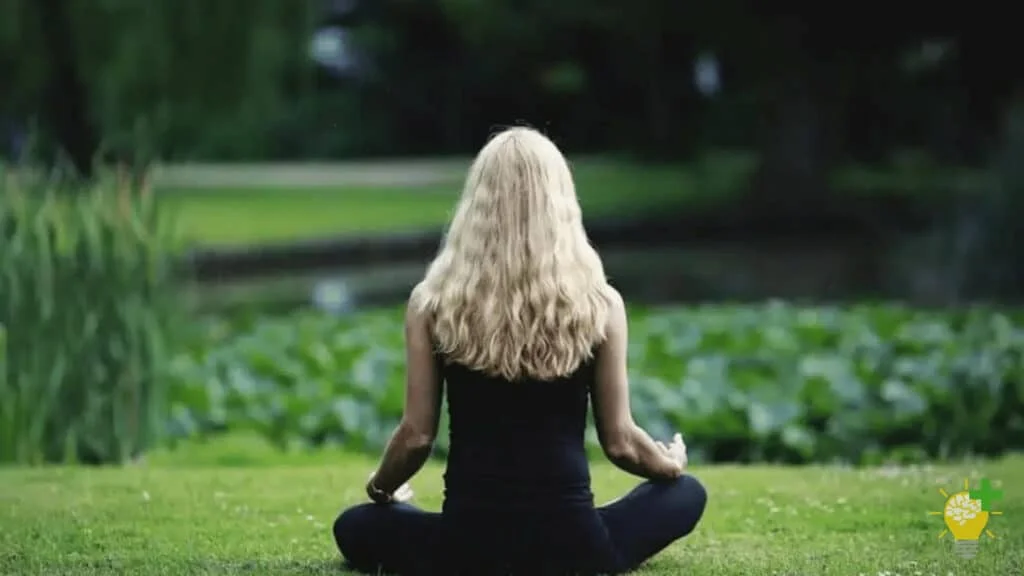Modern living is packed with a thousand-and-one things that can easily cause stress and anxiety. Anyone looking to live a more engaging and happier life must find helpful ways to ease stress.
One way to do this is by incorporating mindfulness challenges into your daily routine. Doing this helps you slow down and become more aware of your thoughts and surroundings.
As you stay rooted in the present, you are more likely to respond intelligently rather than have knee-jack reactions to situations. Staying present reduces worrisome thoughts and soothes anxiety, resulting in a happier life, no matter what happens.
Practicing mindfulness offers more than emotional and mental benefits. Research suggests that consistently practicing mindfulness meditation can alleviate chronic physical pain.
But like countless other people, you probably know these things.
And truth be told, theory alone isn’t very helpful in real-life situations. For this reason, I’ve compiled a list of 6 mindfulness challenges to do with yourself and incorporate into your daily life to gain the full benefits of the practice.
1. Morning Mindfulness Breathing

What better way to start your day than being calm and refreshed? That’s exactly what this mindfulness activity helps you achieve.
Somehow, we let go of all our fears, worries, and concerns when we drift off to sleep at night. But as soon as we wake up, we automatically pick up where we left off ― dressing ourselves up in all the things that weigh us down and make us feel stressed.
This is where the morning mindfulness breathing comes into the picture. It involves bringing your attention to the rhythm of your breath. Observe the ins and outs of your breath without trying to control or change it.
By focusing on something as non-triggering as your breath, you can head into your day in a calmer state of mind.
I strongly suggest making this daily mindfulness practice a part of your morning routine if you typically start your day feeling rushed or overwhelmed. It is one of the simplest mindfulness challenges to do and doesn’t require a lot of time. Additionally, it helps you wake up gently, so you are more clear-headed going into your day.
How to Do It
- Set your alarm to wake you up 5 or 10 minutes earlier than you normally would.
- When the alarm goes off, snooze it for another 5 or 10 minutes.
- Next, sit up and focus on your breath. Breathe normally, paying attention to how the air flows in and out of your lungs.
- If your mind wanders (as it probably will), gently bring your attention back to your breath. Remember not to berate yourself for getting distracted.
- Resist the temptation to do this breathing exercise while lying down, as you will likely drift off to sleep.
- The morning mindfulness breathing is over when the alarm goes off the second time.
Although I did say that this is a simple mindfulness activity, it can feel quite challenging the first few times.
Keeping a leash on your thoughts and bringing your mind back to your breath when it wanders can be a bit tricky when you first start this mindfulness meditation practice. But it gets easier with consistent practice.
With time and mindfulness training, you will begin to experience and internalize the calmness that comes from rooting yourself in the present moment as soon as you wake up.
2. Single-Tasking

Multitasking may seem like the “natural” way to do things in our modern world, where nearly everyone wants to get more done. And I dare say it is much easier for most busy people to multitask than focus on one activity at a time.
In other words, single-tasking is one of the most difficult mindfulness challenges to do.
Single-tasking (or monotasking) simply means focusing on one task at a time. This means fully bringing your focus and attention to whatever task you are working on until a significant amount of time has passed or the task is completed.
Monotasking requires being present, which means cutting off distractions and showing up fully to the activity at hand.
Trying to get more things done by multitasking will ultimately lead to less productivity and more stress.
And when you really think of it, humans can’t multitask in the true sense of the word. You can only switch between tasks rapidly and increase your chances of making mistakes. But you’re still doing one thing at a time ― and adding to your stress level in the process!
How to Do It
- First, get clear on the task to be completed.
- Next, make up your mind to focus on only that task for a certain amount of time or until the task is complete.
- Remove all potential distractions (for example, turn off notifications on your computer or phone, close unnecessary browsers on your computer, or turn off the TV).
- Take short breaks if you are working on a lengthy task. Focus on something unrelated to the task during your break periods, which can help you overcome mental blocks.
3. Embracing Uncertainty

Uncertainty is a major source of stress for many people.
Let me rephrase that.
Pushing against uncertainty ― the unending need to be 100% certain about the future and wanting things to turn in a specific way ― can lead to constant worry or anxiety.
If you’re having a hard time basking in the good that’s currently happening in the present moment, it’s probably because your focus is on the past or future. Realize that your power is in the present, and you can only control your emotional response to what’s happening now.
Embracing uncertainty allows you to let go of unnecessary worries about situations you can’t control. It helps you trust that everything will be okay, and there’s really no need to get strung up about specific outcomes.
How to Do It
Whenever you catch yourself worrying about the future or obsessing about a specific outcome, stop for a moment and do this mindfulness activity:
- Notice your inner chatter for a few moments. Don’t judge the conversations, worries, fears, or predictions; simply observe them.
- Say to yourself (out loud or in your mind), “I am not sure how things will turn out, and that’s okay.”
- Repeat the statement a couple of times until you start to feel a shift in your focus.
- Allow your mind to fully let go of specific outcomes and accept that everything is okay, regardless of what happens.
4. Making a Gratitude List

Gratitude goes beyond merely showing good manners; it is deliberately focusing on the positives in your life.
In other words, it may feel like the entire world is crashing down on you, but gratitude will keep you focused on what’s working. And by bringing the positives to the forefront, you can bask in all that’s going well in the moment without rehashing the past or worrying about the future.
You can make your gratitude list when you get out of bed in the morning to put you in a good mood for the rest of the day. Or you can list what you’re grateful for throughout the day before you hit the sack.
How to Do It
- Grab a pen and your gratitude journal.
- Reflect on the events of the day and write down the things you are grateful for, no matter how small or big they are.
- It would be helpful if you could describe your feelings of gratefulness in greater detail. For example, you can describe how happy and excited you were when you received good news during the day. This is a lot more engaging and can help increase your positivity than merely writing “I received good news” in your gratitude journal.
Remember to do this mindfulness activity each time you feel down and out. That’s because you are not focused on the present moment any time you begin to fret or feel anxious.
Doing this activity can bring your focus back to the present and make you feel better (even if there is no obvious change in your current situation).
5. Mindfulness Eating

Repetition is the key to forming a habit. If you want to make mindfulness a second nature, practice it with something you do every day, like eating.
Mindfulness eating involves being aware of what goes into your mouth (how it feels, smells, and tastes) and the satisfaction you get from the food or drink.
This activity seems easy in theory but can be quite challenging to implement. That’s because you are attempting to be more deliberate about something you typically do without thinking.
How is mindful eating of any benefit? Why should you bother to savor your food or pay attention to the hunger and fullness signals sent by your body?
Here’s the deal.
Eating mindfully helps you slow down, make healthier food choices, eat less, and improve your digestion.
Conversely, eating on autopilot increases the chance of eating unhealthily. This means you are more likely to ignore your body’s fullness signal and keep eating until your plate is empty.
Also, the chance of giving in to comfort or junk foods is high when you eat mindlessly. You may also eat because you are bored, sad, stressed, or just to fill an emotional void.
How to Do It
- Before you dig in, take a few moments to become aware of the food in front of you. Take in the aroma, notice the colors, and appreciate the food.
- Notice how hungry you are. You want to eat to satisfy physical hunger, not to distract yourself from an uncomfortable feeling.
- Employ all your senses as you begin to eat. Save each bite, noticing the flavors and textures that hit your taste buds.
- Avoid multitasking when eating. Pay attention to the food in front of you and avoid watching TV, reading, driving, or walking when you eat.
- Eat slowly so you can notice when you feel full and stop eating.
6. Evening Mindfulness Check-In

Since we kicked off this list of mindfulness challenges with an early-morning activity, it makes sense to end it with an evening exercise.
The evening mindfulness check-in involves taking a few minutes to observe and feel your emotions without judgment.
The aim is simple: you want to give yourself permission to really connect with and experience your emotions without beating yourself up. This prevents a build-up of negative emotions that can lead to depression, self-loathing, and a general feeling of not being good enough.
How to Do It
Find a quiet spot where you won’t be disturbed for a few minutes and do this mindfulness exercise:
- Sit or lie in a comfortable position.
- Take a moment to reflect on the events of the day, particularly the things that triggered difficult or painful emotions like fear, anger, rejection, sadness, self-criticism, and loneliness.
- Now, notice the emotion and why you feel that way. For example, you may feel angry because no one at work seems to appreciate your efforts.
- Next, shift your focus from the reason behind the emotion to the way the emotion feels. Observe the emotion, allowing yourself to feel it fully without beating yourself up for feeling that way.
- Don’t act on any impulses that may arise; simply observe and feel your emotions in the present moment.
- In many instances, you may notice that the intensity of the feeling will start to subside after a short while when you allow yourself to experience it without judgment. That’s because the emotion tends to fade without a reason to fuel the feeling.
Keeping this mindfulness practice short is crucial, as you don’t want to dwell on negative emotions for too long.
One more thing.
Although the name says “evening mindfulness check-in,” you can do this activity at any time of the day. The idea is to get in touch with how you are feeling in the moment without being judgmental.
Final Thoughts
Mindfulness activities and challenges aren’t going to magically turn a bad situation into a good one. But they can change your perspective ― how you think and feel about the situation ― and how you respond.
Remember, a calm mind helps reduce stress, increase productivity, improve connections with others, and makes for more meaningful life experiences.




